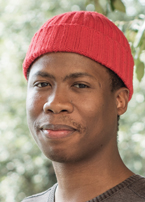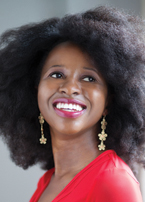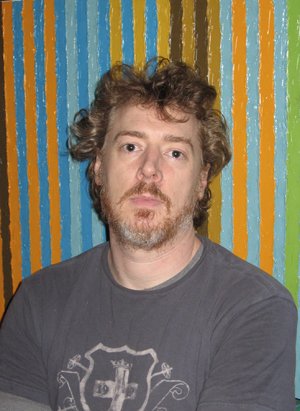I ran a marathon once, all 26.2 miles of it. When people hear I did this, reactions are generally the same. There is the initial incredulity, followed by the indiscrete body scan—needless to say I do not cut the figure of a gazelle-like distance runner—and finally murmurs of admiration. The most common response I hear is I could never in a million years do that, to which I always reply: Ah, but you could.
Truth is, there’s nothing special about me. I’m just a girl whose friend asked her if she’d run a marathon with her and, not thinking all that hard about it, said: Um, sure.
Make no mistake, training for and running a marathon was hard. It required a monk-like dedication—indeed, a religiosity—that I’d never before practiced. And yet I was able to successfully complete it. How, exactly?
It’s a question I’ve been asking myself a lot lately as I embark on yet another marathon, this one more ultra—sixty, perhaps a hundred miles or longer—in nature. The event date of this race is unknown, and yet its conditioning schedule is far more rigorous than anything I’ve experienced before. You see, I’m trying to complete a book.
![]()
In reflecting on what it took to run a marathon, I’m mystified why the depressed, alcohol-addled stereotype of writers wasn’t usurped long ago by the endorphin-addicted, fartlek-speaking, type-A runner-author, since so many of the qualities required to run a marathon are necessary for writing a book, the most fundamental among them being the ability to develop habits.
In Good Habits, Bad Habits: The Science of Making Positive Changes That Stick (Farrar, Straus and Giroux, 2019), Wendy Wood explains that habits are formed when decision-making stops and automation starts. In essence, our brain follows the advice an excellent—and exasperated—therapist once gave me: Don’t think! Just do!
It turns out that people who are successful at developing good habits and ultimately achieving goals aren’t superheroes possessing iron-clad will power and self-control. Instead, they create conditions that optimize their likelihood for success, reducing what Wood refers to as “friction”—external forces that might impede their ability to get that thing they really want to do but are resistant to doing, done. Simultaneously, they create cues that signal the start of that habit so their brains and bodies grow accustomed to a specific routine. Combined, these two factors help them get their thoughts out of the way, paving a road for success.
Training for the marathon, I was able to do this. I avoided friends I knew would encourage late nights of debauchery; I read and watched things that would motivate and inspire me; I kept a strict sleeping schedule; I followed nutrition guidelines to optimize my performance. I refrained from taking on new hobbies or challenges that might pose a risk to me physically; I planned ahead for visitors and mapped out running routes when on vacation.
Most important of all, I kept a set schedule, running at the same time every morning, four days a week, for specific amounts of time. Though initially I came up with all sorts of reasons not to go, negotiating and renegotiating with myself—I’ll run after work; I’ll run twice as long tomorrow; I had an awesome run yesterday and will skip today—I quickly learned diplomatic efforts weren’t getting me anywhere and I needed to return to my original roadmap. Although those early weeks were tough, eventually I reached a point where I was waking up minutes before my alarm. With little if any thought I drank a glass of water and half a cup of coffee, tied my shoes, and headed out the door.
This is no different for writers. We’ve all heard about the importance of ritual—writing at the same time and in the same place, making sure at the end of one day we know where we’ll begin the next. Some of us become superstitious about this. Like Michael Jordan wearing his University of North Carolina shorts underneath his Chicago Bulls uniform for every game, we don hats and frayed sweaters, light scented candles, pour specific herbal teas, turn on music we imagine is the soundtrack for our project. I brew espresso, froth milk, double-fist my cappuccino with a tall glass of water. I find the earthy scent of coffee, the gurgling of the steamer—even that specific tumbler-style glass I prefer—all lead my mind toward my creative work. These are cues, indicating to my body that this is the particular moment of the day when I sit down, open my laptop, and imagine.
Of course, cues aren’t enough to make the writing happen, and sometimes the days just suck. But this challenge is no different than the one I faced training for that marathon. It wasn’t that I wanted to go running. It wasn’t that I was inspired. Sometimes I was so flush with the runner’s high I had to hold myself back from going longer and harder than I’d planned, but more often running was painful, slow, and discouraging. Still, I resisted thinking that might impede me from training, channeling my inner robot: Wake. Run. Eat. Sleep. Repeat.
As writers, it’s hard for us to resist thoughts. After all, isn’t thought essential to writing? Well, yes and no. When that wonderfully patient therapist admonished me with Don’t think! Just do! she wasn’t mimicking a tough-love Nike ad; she was highlighting my tendency to over-analyze to the point of paralysis.
Think of your thoughts like a two-handled faucet, she explained. You want hot water, not cold. When you start to overthink and can’t act, imagine turning the cold water—your over-analysis—off. Allow the hot water to flow. Take a bath.
![]()
This is all easier said than done, of course, and it doesn’t do much good when, despite your best intentions, the world conspires against you. Your computer breaks. The phone rings when you’re deep in creative flow; the plumber who’s scheduled to come at four arrives instead at two.
However perfect we create conditions for success, friction will inevitably appear. Midway through marathon preparation, my friend injured her knee and dropped out. We’d been training partners, and her absence made me feel unmoored. I considered quitting. Then I developed ITB syndrome, an overuse injury that causes pain in the outer thigh and knee joint, and an orthopedist told me I needed to take six weeks off to heal.
It is often just this sort of impasse we need to be reminded of how important something is to us. Being told I could not run only motivated me. Reflecting back on the two months of training I’d completed, I saw how far I’d come, running distances I’d never imagined possible. I had no interest in giving up, and eventually, once we’d both recovered, my friend and I selected a new marathon and resumed training.
It turns out that trying and failing and trying again—that’s a habit too. And sometimes disruptions are just what we need to get our priorities in place. A break in routine can provide a fresh perspective, giving us the necessary distance that helps us see a goal and our relationship to it anew.
Sometimes this distance results in a difficult realization. For me, a break from an earlier manuscript meant coming to terms with the fact that I needed to abandon it altogether. But a similar vacation from my current book resulted in the opposite, only strengthening my resolve to complete it.
![]()
It’s hard to run a very slow race and, contrary to popular opinion, it’s actually hard to write even a bad book. It’s more fun when it feels good, when we’re inspired and can think of nothing better than spending an hour or two at our desks spinning brilliance. But so much of writing comes down to the most humdrum and banal of days, if we’re willing to commit to it.
I’ve written before about how I think writing advice—the popular tropes that have come to feel like rules to many of us—can, despite their best intentions, prove to be a disservice. I still stand by that belief. I don’t think measuring myself against the extreme-sport discipline of Stephen King or Joan Didion is helpful for my own process. Which is why when I say I do believe habit is essential to getting the work done, it also requires self-awareness about the conditions that are right for me.
Let me return to that marathon. After my break from training, I consulted with a running coach. He recommended establishing a run-walk ratio of 6:1—six minutes of running followed by one minute of walking. Given my previous injury, I needed to consider how to reduce the potentiality of another such setback. A run-walk combination provided brief interludes of recovery time for my body, decreasing my likelihood of reinjury. In addition, he suggested a reduction in weekly mileage, focusing on the minimum and not the maximum number of miles I should complete.
At first, I was resistant to his advice. I wanted to run a marathon, not walk it. I wanted to push myself. Hard.
“Are you running for time?” the coach asked.
“No,” I admitted.
“So what’s your goal?”
“I just want to finish it.”
“Well,” he said. “Both of these approaches will help you do that.”
It turned out he was right. On those days when the runs felt really hard, I reminded myself that I just needed to complete three miles (my baseline) and could run them as slowly as I wanted. The 6:1 ratio helped me “chunk” my runs—rather than thinking of the whole (long) distance, I visualized it incrementally, focusing only on those six minutes before the next minute-long walking interlude. Inevitably, after that minute I was ready to run again. As I drew nearer to the end, I’d look into the distance, my finish line in easy view.
These same lessons apply to writing, too. While I’d love to win a Pulitzer or receive a Guggenheim, my aim is not awards or even publication, but rather completion. I commit to five days a week, an hour minimum, and use an hourglass to keep time, allowing myself to do one of two things: write or watch sand. In the same way that I chunked my runs, I chunk my writing, keeping my eyes focused not on the entire book but, depending on the writing goals for a given moment, a single chapter, page, or paragraph.
While there are days when I do nothing but watch white sand funnel and pile, more often my experience is like that of my marathon: I write beyond my expectations, seeing that the finish line is not so very far after all.
![]()
The largest challenge of both writing a book and running a marathon is one and the same: keeping fear at bay.
While training for a marathon, I was constantly beating fear back into the dark corner from whence it had crept. I worried about muscle soreness, a cramp I developed during a particularly grueling run, an ache in my knee when doing bench presses. Two weeks before the race, I put out my back. Panic set in.
Having quit a previous manuscript, these days fear about my current creative project likewise runs high. I’m at the same critical juncture—call it Heartbreak Hill—that proved most difficult and fatal to me in my last attempt. What will happen this time? I ask myself. Will I experience an injury and need to regroup? Or will I quit like I did the last time?
I think I know what my old therapist would say. But since I no longer see her, I’ve found others to assist me when I’m unable to reassure myself. This is another lesson I learned from that marathon: However small it may be, find your community to help you cross the finish line.
On the morning I threw out my back, I wondered who I should consult. Though most of my loved ones were supportive, none of them were choosing to live the way I was, and translating this choice—my reasons for pursuing it, for giving up other pleasures and interactions in order to complete it—had been impossible. Truth is, it was hard for me to articulate all this for myself. Running simultaneously enriched and complicated my life; I felt open to a new community and isolated from old social connections. In general, I avoided talking about it because when I did I was often misunderstood. It made no sense to contact any of these people to lament my predicament, especially since there was a good chance they would tell me precisely what I didn’t want to hear: Quit.
Sound familiar?
I called my training partner. After reassuring me this was a minor glitch, she advised me to call the running coach; he’d know what to do.
When I contacted him, his immediate reaction—to laugh—eased my mind.
“Of course you threw out your back,” he said. “That’s gotta happen two weeks before the race.”
He reminded me that all my work had been done; I was ready to run whether I trained in those final weeks or not. He recommended I walk for ten minutes a day, adding a minute’s worth of jogging until my back felt better. And it would feel better, he assured me. He was right.
Sometimes, you just need someone else—the right someone else—to advise you.
Recently I sat down at my desk, opened my manuscript, and began to hyperventilate. The whole thing needed to be changed, the structure wasn’t right, I needed to break it down, rearrange it, start from scratch. I was in the middle of redrafting when I had these cold-water thoughts and the tap was broken; I couldn’t shut my thinking off.
Tears running down my cheeks, I texted a writing friend.
What should I do? I asked. It’s all wrong. Why can’t I just write this STUPID BOOK????
Calm down, my friend wrote back. You ARE writing this book. Get to the end of the draft. Finish the revision first.
In my writing studio, on the wall opposite my desk hangs a photo. It is of me at the marathon finish line—draped in a foil space blanket, gripping a cup of Jamba Juice and a bouquet of flowers my husband brought me, smiling ecstatically, looking shockingly good for a person who had transformed herself into a human salt lick. It is just about the only photo of myself I can tolerate.
You can do it, my friend wrote. You ARE doing it!
I studied that photo. I knew she was right.
Lenore Myka is the author of the award-winning short story collection, King of the Gypsies (BkMk, 2015). A recipient of numerous awards, including a National Endowment for the Arts Literature Fellowship, she is currently at work on a memoir.






















